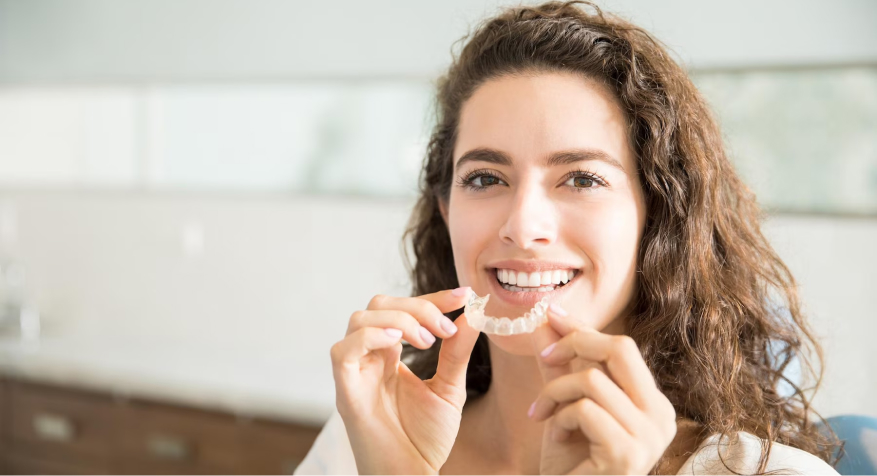Maintaining Clear Aligners and Your Smile
Proper care for your clear aligners is necessary to enable effective treatment outcomes and to maintain optimal oral hygiene. Aligners are a convenient and discreet solution for correcting dental alignment, but they require consistent upkeep to prevent damage, discoloration, and bacterial buildup. Here is more information on the best practices for cleaning, storing, and handling your aligners, as well as tips for safeguarding the health and appearance of your smile throughout the treatment process:
Cleaning and Storing Aligners
Proper cleaning is key to keeping clear aligners free of bacteria, plaque, and odors. Begin by rinsing your aligners with lukewarm water every time you remove them. Hot water can warp the plastic, rendering the aligners ineffective. Avoid cold water, as it may not effectively remove residue.
Brush your aligners gently with a soft-bristle toothbrush and clear, unscented soap once a day. Harsh cleaners, toothpaste, or abrasive brushes can scratch the aligners, making them more noticeable and less effective. Rinse thoroughly after brushing to remove all soap residue. When not wearing your aligners, store them in their container to protect them from dirt, germs, and potential damage. Leaving them exposed increases the risk of contamination, accidental loss, or even damage from chewing if they are left within reach of pets.
Maintaining Oral Hygiene
For successful treatment, clean teeth and aligners work together. Always brush and floss before reinserting your aligners, as trapped food particles can lead to plaque buildup, gum irritation, or cavities. Use fluoride toothpaste and floss to remove debris between teeth and along the gumline.
Antibacterial mouthwash helps fight bacteria and freshen breath, but use it outside of aligner wear. Wearing aligners immediately after rinsing with mouthwash may cause staining, so wait a few minutes before putting them back in. Schedule regular dental visits for professional cleanings. Dental professionals can monitor the health of your teeth and gums during treatment, addressing any emerging concerns and making sure your aligners fit properly for optimal results. Staying proactive with your oral hygiene will lead to healthier teeth and a brighter smile.
Avoiding Discoloration and Damage
Discoloration and damage can affect the appearance and functionality of your aligners. To prevent these issues, avoid consuming food or beverages, except water, while wearing them. Colored drinks such as coffee, tea, or wine can stain the plastic. Acidic beverages, such as soda or juice, can weaken the material.
Refrain from chewing gum or eating sticky foods while wearing aligners to avoid damage. The aligners are not designed to withstand the pressure of chewing, and damage could hinder the realignment process. Inspect aligners for any cracks, discoloration, or irregularities each time you clean them. Contact your orthodontist if you notice any issues, as replacements may be required to be sure your treatment stays on track.
Get Clear Aligners
Caring for aligners properly makes your treatment more effective and keeps your teeth healthy. Rinse and brush your aligners daily, and store them in their case for protection. Maintain your oral hygiene by brushing and flossing before reinserting aligners. Avoid eating, drinking, or chewing gum when wearing aligners to prevent stains or damage. For further guidance during your treatment, consult your orthodontist regularly. By following these steps, you’ll keep your aligners in great condition and maintain a healthy, confident smile throughout your treatment.
- Mutual Funds vs ELSS Funds: Which One should have a Spot in Your Portfolio?
- Understanding the Role of Regular Check-Ups With Your Dentist
- How to Set Up Bookshelf Speakers to Your Home Theater?
- The Three Things That Drop Your Loan Rate by Half
- The Warning Signs That Credit Card Debt Is Becoming Unmanageable

